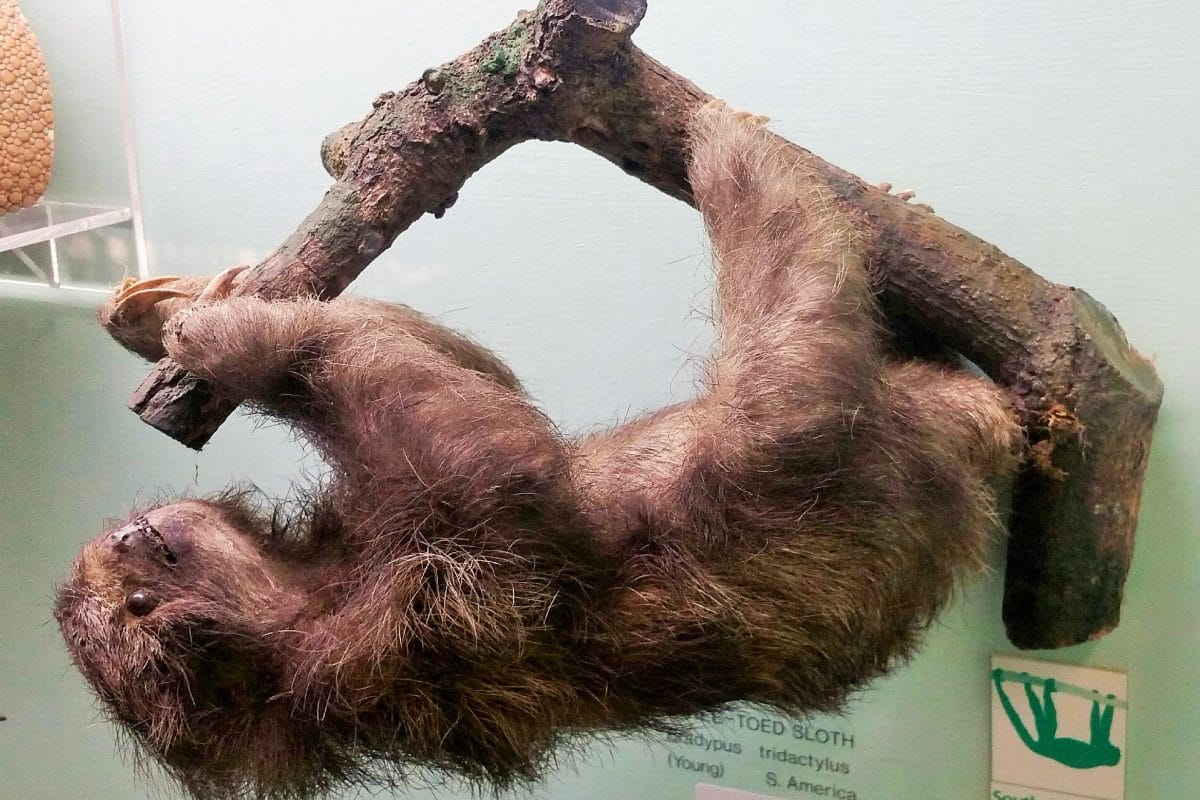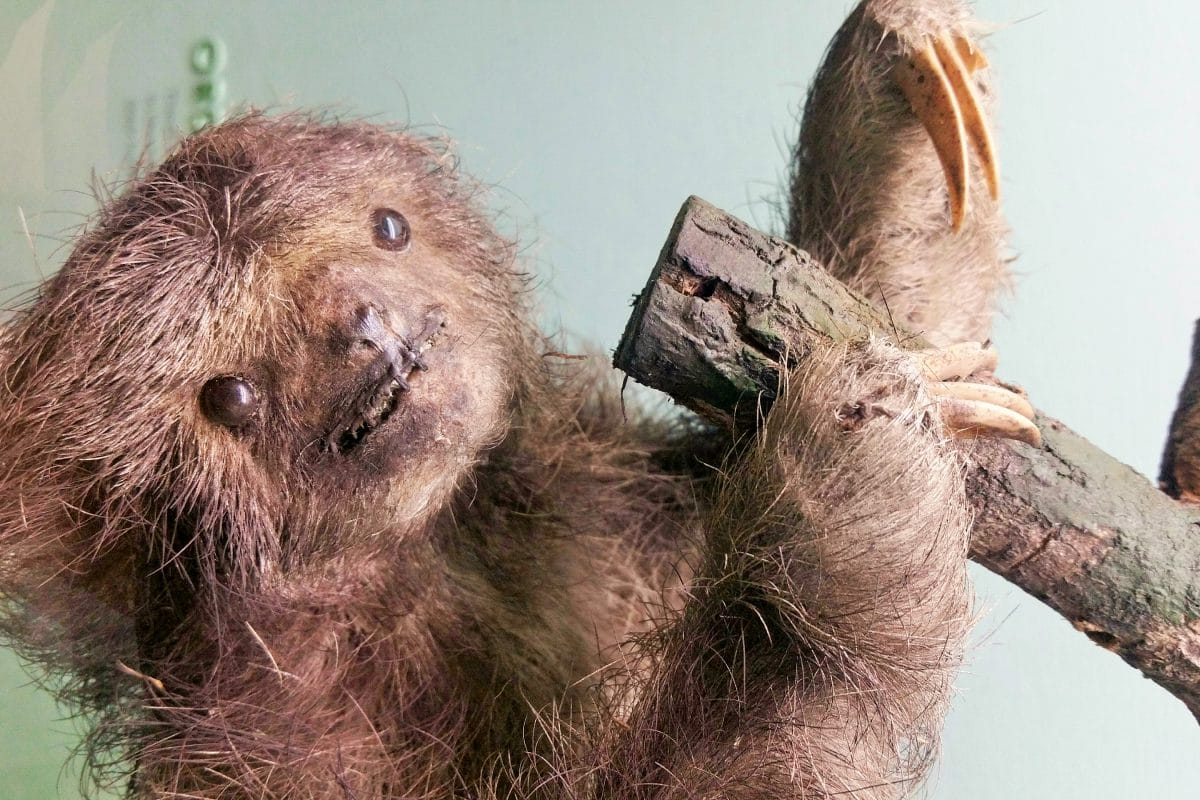Olympic athlete
The scientific name for a three-toed sloth is Bradypus, brady meaning slow and pus meaning feet.
Sloths are collectively the slowest mammals in the world.
On the ground they are slow, but in the trees where they’re in their element… they’re also slow.
They move so slowly that algae is able to grow on their fur undisturbed by movement. Besides providing a rather fetching green tint to their otherwise unfashionable grey outfit, the algae also provides the sloth with a little extra camouflage.

Why are sloths slow?
The main reason that sloths are so slow is because they have an extremely low metabolic rate. Because sloths mostly eat leaves their calorie intake is very low and so they use a low rate of energy per day.
Modern sloths, like the three-toed sloth and two-toed sloth, are much smaller versions of the sloths that were around in prehistoric times.
Now that sloths live in much more hot and humid conditions than their prehistoric ancestors, they don’t need the endothermic system that evolution handed them.
The endothermic system would see you use a lot of energy to keep warm, but because they already live somewhere warm, they don’t need to use all that energy!
Where do sloths live?
Sloths live throughout central America and the north of south America, including parts of Brazil and Peru.
They spend most of their time high in the trees of tropical rainforests.
Because they live in trees there aren’t many predators that can get to them – so they don’t need to move particularly fast and a slower pace of life works just fine for them.
Catch me if you can
They may be the slowest mammals in the world but catching a sloth can still be a tricky affair. In Central and South America where these sloths are found, indigenous people sometimes hunt them for food.
Sloths may be slow but they’re definitely not weak. The sloths grip is so strong that not only can they sleep whilst still hanging upside down, but they can also stay hanging upside down after they die.
This means that if a sloth is speared or darted (or shot) there’s a strong chance it won’t fall to the ground immediately. It can take several days for the flesh to decay enough for the locked digits to loosen their grip on the branch. By which time, the hungry hunter will have given up and found something else to eat.

An old young sloth
We know the sloth in our collection is at least 111 years old, given it came to the Horniman in 1905 with the Samuel Prout Newcombe Collection.
The original specimen record described it as a young pale-throated sloth (Bradypus tridactylus). However it seems to lack the substantial markings on its facial fur characteristic of that species.
Unless the sloth’s fur has faded in highly isolated patches against the laws of physics (extremely unlikely), the markings on the back and more monotone face (not meaning to bruise its ego) suggest it’s probably a juvenile of the brown-throated sloth (Bradypus variegatus).
How do sloths sleep?
In fact, sloths spend a lot of their time hanging upside down – including when they sleep.
Mostly nocturnal, sloths sleep for up to 16 hours a day. Much of this is spent hanging upside down in trees.
What do sloths eat?
Sloths are mostly herbivores, eating what they can pull from the trees like leaves, fruit and green shoots. However, they will also snack on insects or bird eggs if they come across them.
Just like they move slowly, sloths digest slowly. They only poo once a week, and will come down from the trees especially.
Can sloths swim?
Despite moving slowly on land, sloths are speedy swimmers. Their long arms are helpful at propelling them through the water and they swim three times faster than they move on land.
Are sloths endangered?
The three-toed sloth is listed as vulnerable on the IUCN Red List of Threatened Species, but the pygmy three-toed sloth is listed as critically endangered.
Deforestation across central and south America means that sloths are losing their habitats, putting them at risk.



